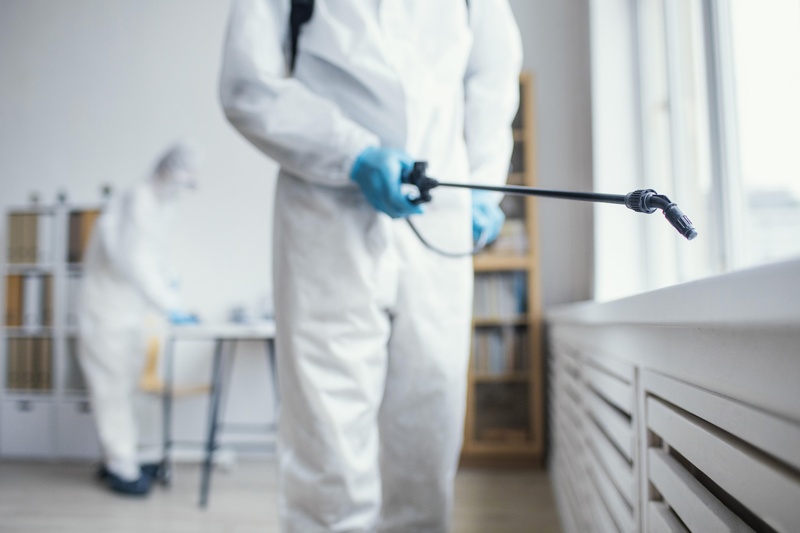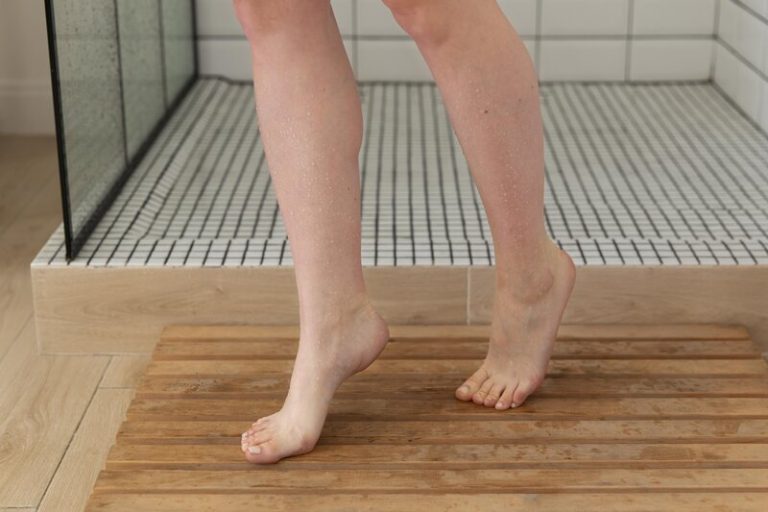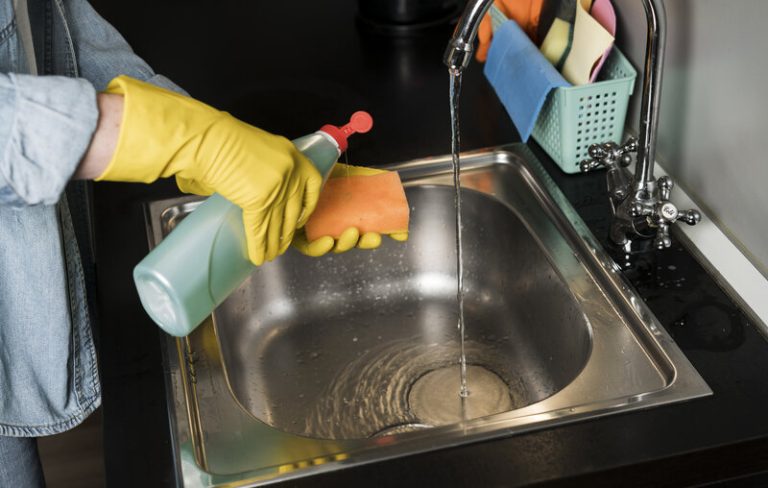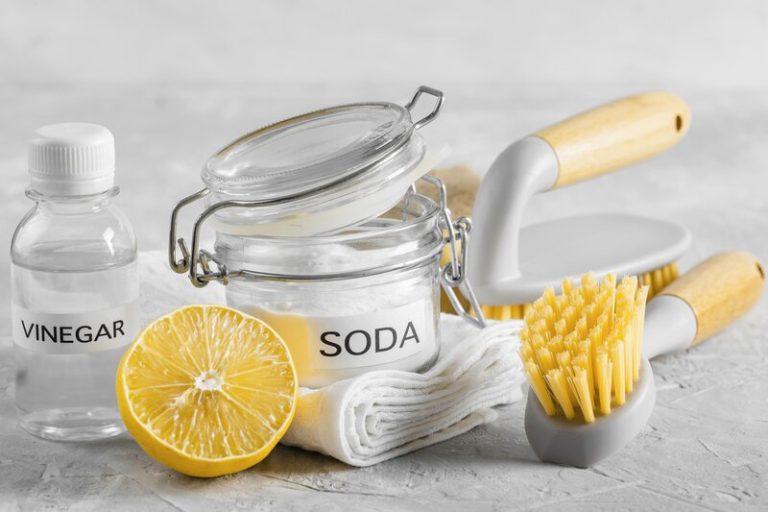Disinfection plays a crucial role in keeping our environments safe and free from harmful pathogens. However, what is disinfection and what are the main methods of disinfection?
There are various ways to disinfect surfaces and water sources, including physical, chemical, and biological methods.
Understanding the different types of disinfection, methods, and common disinfectants used is essential for maintaining cleanliness and preventing the spread of illnesses.
In this article, we will explore what is disinfection, why disinfection is important, how it works, steps to disinfect properly, and safety precautions to consider when using disinfectants.
What Is Disinfection?
Disinfection is the process of eliminating or reducing harmful microorganisms from surfaces, objects, or fluids. So, what is the role of disinfection? It plays a crucial role in maintaining hygiene and preventing the spread of infections.
In healthcare settings, proper disinfection protocols are essential to prevent healthcare-associated infections and safeguard patients, staff, and visitors.
In households, regular disinfection of high-touch surfaces such as doorknobs, countertops, and electronic devices is imperative to create a healthy living environment.
In public spaces, like airports, schools, and gyms, effective disinfection measures are vital to curb the transmission of pathogens like MRSA, E.coli, and coronaviruses, thus ensuring public safety.
Why Is Disinfection Important?
Disinfection is essential to protect individuals from the harmful effects of pathogens and microorganisms. It helps in preventing the spread of infectious diseases and maintaining a safe environment.
Disinfection plays a crucial role in various sectors such as healthcare, the food industry, and public health by effectively eliminating harmful pathogens and reducing the risk of infections.
In the healthcare sector, proper disinfection of medical equipment, surfaces, and instruments is vital to prevent healthcare-associated infections and ensure patient safety. Similarly, in the food industry, disinfection helps in maintaining food safety standards and reducing the risk of foodborne illnesses. In public health settings, disinfection of public spaces, transportation, and high-touch surfaces helps in limiting the transmission of diseases among the general population.
The Different Types Of Disinfection
Besides understanding what is disinfection, you should also know that there are different types of disinfection.
Disinfection can be categorised into physical, chemical, and biological methods. Each type of disinfection has its unique mechanisms and applications.
Physical disinfection methods involve processes such as heat, filtration, or radiation to kill or remove pathogens. These methods are effective in destroying a wide range of microorganisms, including bacteria and viruses.
Chemical disinfection, on the other hand, relies on the use of disinfectants such as chlorine, alcohol, or hydrogen peroxide to eliminate germs. These chemicals disrupt the cell structures of pathogens, thus preventing their growth and reproduction.
Biological disinfection employs living organisms like bacteria or enzymes to break down organic matter and neutralise pathogens. This method is particularly useful in wastewater treatment and composting processes where biological agents aid in decomposition and pathogen removal.
a. Physical Disinfection
Physical disinfection involves the use of heat, filtration, or radiation to eliminate microorganisms. Heat treatments like boiling can effectively kill pathogens such as Pseudomonas aeruginosa, while UV light can inactivate viruses like the hepatitis B virus.
Heat is a widely utilised method in physical disinfection due to its simplicity and cost-effectiveness. For instance, autoclaving is a common practice in healthcare settings to sterilise medical equipment.
Filtration, on the other hand, is crucial in industries like water treatment, where membranes are used to remove bacteria and protozoa.
Similarly, radiation methods, such as gamma irradiation, are employed to sterilise food products and pharmaceuticals. These techniques target a wide range of pathogens, including bacteria, viruses, and fungi, making them versatile tools for maintaining cleanliness and safety.
b. Chemical Disinfection
Chemical disinfection involves the use of disinfectants such as bleach, hydrogen peroxide, and quaternary ammonium compounds. These chemicals are regulated under organisations like COSHH and HSE, with products like Oxivir Excel Cleaner being commonly used.
Each disinfectant has a specific mode of action; for example, bleach works by oxidising proteins and breaking down cell walls. Hydrogen peroxide is known for its oxidative properties, while quaternary ammonium compounds disrupt cell membranes.
Proper understanding and adherence to safety regulations set by COSHH and HSE are crucial when handling these potent chemicals to prevent harmful exposure.
Organisations recommend using protective equipment, following correct dilution ratios, and ensuring proper ventilation to minimise risks during disinfection procedures.
c. Biological Disinfection
Biological disinfection utilises living organisms or their byproducts to control the growth of pathogens. Methods like probiotics and bacteriophages are being researched for their potential in combating antibiotic-resistant bacteria like MRSA. Organisations such as the CDC play a vital role in studying and implementing biological disinfection strategies.
Probiotics, which are beneficial bacteria like Lactobacillus and Bifidobacterium, have shown promise in outcompeting harmful pathogens by creating an environment unfavourable for their growth.
Bacteriophages, viruses that infect and kill specific bacteria, are being explored as a targeted approach to combating infectious diseases while avoiding the overuse of antibiotics.
The CDC, a leading public health institute, educates the public on the benefits of biological disinfection, emphasising its potential to reduce the spread of diseases without contributing to antibiotic resistance.
What Are The Main Methods of Disinfection?
An article about what is disinfection would certainly not be complete without an explanation of what methods can be used for the disinfection process.
Disinfection can be achieved through various methods including boiling, chlorination, UV light, and ozone treatment. Each method has its unique advantages in eliminating pathogens and maintaining cleanliness.
Boiling is a simple yet effective method of disinfection that works by raising the temperature high enough to kill most microorganisms. It is commonly used for sterilising water in outdoor settings where access to other disinfection methods may be limited.
- Chlorination involves the addition of chlorine compounds to water, which kills bacteria and viruses by disrupting their cell structures. This method is widely employed in municipal water treatment facilities to ensure safe drinking water for communities.
UV light disinfection utilises ultraviolet radiation to deactivate the DNA of microorganisms, preventing them from reproducing. It is commonly used in healthcare settings to sterilise medical equipment and surfaces.
Ozone treatment is a powerful disinfection method that oxidises and destroys bacteria and viruses. It is commonly used in wastewater treatment plants to remove contaminants and pathogens before discharge.
a. Boiling
Boiling is a simple yet effective method of disinfection that destroys harmful pathogens like E.coli and coronaviruses by denaturing their proteins. This method is commonly used for water purification in households and medical settings.
It works by raising the temperature of the water to a point where microorganisms cannot survive, essentially killing them off. Boiling is particularly useful in situations where access to other disinfection methods, like bleach or filtration systems, is limited.
- During camping trips or outdoor activities, boiling water is a reliable way to ensure its safety for drinking.
- In emergency situations where clean water supplies are disrupted, boiling becomes a vital step in preventing waterborne illnesses.
- For sterilising baby bottles, kitchen utensils, and medical equipment, boiling is a straightforward and affordable option that many choose for its effectiveness in killing harmful bacteria.
b. Chlorination
Chlorination involves the use of chlorine-based compounds to disinfect water and surfaces. It is effective in destroying pathogens like norovirus and is a recommended method by organisations such as UNICEF for water treatment in developing regions.
In the process of chlorination, chlorine is introduced into the water to eliminate harmful microorganisms and bacteria, ensuring that the water is safe for consumption. This method has been proven to be particularly effective against a range of pathogens, including E. coli and Giardia, making it a reliable choice for maintaining clean and sanitised water sources.
c. Ultraviolet (UV) Light
UV light disinfection utilises ultraviolet radiation to destroy the DNA of microorganisms, preventing their replication. This method is widely documented in research databases like MEDLINE and MeSH for its effectiveness in controlling the spread of infections.
UV light works by directly damaging the genetic material of pathogens, making them unable to reproduce or cause harm. Scientific studies have demonstrated that UV light effectively inactivates a wide range of microorganisms, including bacteria, viruses, and fungi. The process involves exposing the target area to specific wavelengths of UV light, disrupting the structure of the microbes’ DNA.
This disruption prevents the microorganisms from performing vital cellular functions and ultimately leads to their demise. Research published in reputable sources like MEDLINE and MeSH has consistently supported the efficacy of UV light disinfection in various settings, from healthcare facilities to water treatment plants.
d. Ozone Treatment
Ozone treatment involves the use of ozone gas to disinfect air and water by disrupting the cellular structure of microorganisms. Studies published in journals like the American Journal of Infection Control and Infection Control and Hospital Epidemiology have highlighted the effectiveness of ozone in disinfection.
Research has shown that ozone treatment can effectively eliminate various pathogens, including bacteria, viruses, and fungi. The oxidative properties of ozone play a crucial role in neutralising these harmful microorganisms. In one study cited in the American Journal of Infection Control, ozone was found to be efficient in eradicating drug-resistant pathogens, showcasing its potential in healthcare settings.
The Common Disinfectants Used
Common disinfectants include bleach, alcohol, hydrogen peroxide, and quaternary ammonium compounds. These agents are widely used in healthcare, sanitation, and household settings for their effectiveness in killing pathogens.
Bleach, commonly known as sodium hypochlorite, is a powerful disinfectant that can effectively kill a broad spectrum of bacteria, viruses, and fungi. It is commonly used to sanitize surfaces in healthcare facilities and laboratories.
Alcohol-based disinfectants, such as isopropyl alcohol and ethanol, are effective against a wide range of pathogens and are often used for hand sanitization.
Hydrogen peroxide is known for its ability to break down into oxygen and water, making it a safe and eco-friendly disinfectant option.
Quaternary ammonium compounds, often referred to as quats, are effective against a variety of pathogens and are commonly used in cleaning and disinfection of non-critical surfaces. Each of these disinfectants plays a crucial role in preventing the spread of infections and maintaining cleanliness and hygiene in various environments.
a. Bleach
Bleach, a chlorine-based disinfectant, is highly effective in killing a wide range of pathogens and viruses. Its strong oxidising properties make it a popular choice for disinfecting surfaces in healthcare facilities and households.
Its versatility extends beyond household use, as it is also employed in water treatment processes, laundry sanitation, and even in certain industrial applications. When using bleach as a disinfectant, it is crucial to follow proper dilution guidelines to ensure its effectiveness and avoid damage to surfaces and materials.
Handling bleach requires precautionary measures such as wearing protective gear like gloves and goggles, as direct contact can lead to skin irritation and respiratory issues. Proper ventilation is also essential to prevent the inhalation of harmful fumes.
b. Alcohol
Alcohol-based disinfectants are effective in destroying bacteria and viruses on surfaces. They are commonly used for hand sanitization in healthcare settings and public areas due to their rapid action and convenience.
Aside from their significance in healthcare, alcohol-based disinfectants play a crucial role in various industries, including food preparation, hospitality, and even in household cleaning. The high alcohol content in these disinfectants allows them to efficiently break down the lipid membrane of pathogens, rendering them inactive.
It is vital to emphasize the importance of proper application techniques and adequate contact time. Ensuring that the disinfectant remains on the surface for the recommended duration is essential for maximum effectiveness against a wide range of harmful microorganisms.
c. Hydrogen Peroxide
Hydrogen peroxide is a versatile disinfectant known for its broad-spectrum antimicrobial properties. It is used for surface disinfection, wound cleansing, and as a mouthwash due to its antiseptic qualities.
Hydrogen peroxide finds its applications in healthcare settings for sterilising medical equipment, disinfecting hard surfaces, and preventing infections in hospitals. In households, it serves as an effective cleaner for kitchen countertops, cutting boards, and bathroom surfaces. Its ability to break down into water and oxygen makes it eco-friendly compared to many harsh chemical cleaners.
d. Quaternary Ammonium Compounds
Quaternary ammonium compounds are disinfectants that exhibit excellent antimicrobial activity against a wide range of bacteria and fungi. Researchers like A.J. van Asselt have studied the efficacy and safety of these compounds in disinfection practices.
These compounds are commonly used in healthcare settings for surface disinfection due to their broad-spectrum effectiveness. Studies have shown that quaternary ammonium compounds are particularly successful in eliminating pathogens such as Staphylococcus aureus and Pseudomonas aeruginosa, which are common culprits of hospital-acquired infections.
The versatility of quaternary ammonium compounds makes them suitable for various applications, ranging from food processing facilities to household cleaning products. Their ability to deactivate viruses, including enveloped viruses like influenza and coronaviruses, further underscores their importance in infection control.
How Does Disinfection Work?
Apart from asking about what is disinfection, some of you might also be curious about how this process works.
Disinfection works by targeting the cellular structures or metabolic processes of microorganisms to render them inactive or destroy them completely. The chosen disinfection method determines how effectively pathogens are eliminated from surfaces or substances.
For instance, chemical disinfectants like chlorine-based compounds work by disrupting the cell membrane or denaturing proteins, leading to microbial death. On the other hand, physical methods such as heat or UV radiation interfere with the DNA replication or protein synthesis of pathogens, preventing their ability to multiply or survive. The decision on which disinfectant or method to use should consider factors like the type of microorganisms present, the environmental conditions, and the material of the surface being treated.
The Steps To Properly Disinfect
Proper disinfection requires several key steps including pre-cleaning surfaces, selecting the appropriate disinfectant, ensuring sufficient contact time, and proper ventilation during application. Following these steps is crucial to achieve effective disinfection.
Before starting the disinfection process, it is essential to remove any visible dirt or debris from surfaces. This pre-cleaning step ensures that the disinfectant can come into direct contact with the pathogens and bacteria present on the surface.
Once the pre-cleaning is done, the next step is to carefully choose the right disinfectant for the specific pathogens you are targeting. Choosing a disinfectant that is proven effective against the particular type of bacteria or virus you are dealing with is key.
The Safety Precautions When Using Disinfectants
When using disinfectants, it is essential to follow safety precautions such as wearing protective gear, avoiding mixing chemicals, ensuring proper ventilation, and storing disinfectants out of reach of children. Adhering to safety guidelines is crucial to prevent accidents and exposure to harmful substances.
It is important to dilute disinfectants properly according to the manufacturer’s instructions to avoid skin irritation or respiratory issues. Proper handwashing after handling disinfectants helps minimise exposure and potential health risks.
Moreover, labelling containers correctly ensures that the content is clearly identified and prevents accidental ingestion. Regularly checking the expiration dates of disinfectants is essential to maintain their effectiveness and avoid using expired products.
Following these precautions not only safeguards users’ health but also protects the environment from harmful chemical exposure.
Now you know what is disinfection, the importance of this process, complete with various methods and disinfectants that are commonly used. However, it’s just the beginning.
The real challenge lies in effectively implementing these practices to ensure a clean, safe, and healthy environment for both your employees and customers. This is where TEKA Cleaning steps in, offering specialised disinfection spray cleaning services that not only meet but exceed the standards of cleanliness and hygiene your business requires.
Our partnership with Karcher, a leader in the cleaning industry, equips us with the technology and expertise to deliver unparalleled cleanliness. Our approach is tailored to the unique needs of your business, ensuring comprehensive coverage even in the hardest-to-reach areas.
From the lingering bacteria on high-contact surfaces to the viruses that threaten the health and safety of your workplace, our disinfectant spray cleaning service is designed to eliminate them all, providing a safer environment for everyone involved.
Don’t let the complexities of disinfection deter you from achieving the highest level of cleanliness. Elevate your workplace cleanliness with TEKA Cleaning. Book our specialised disinfection spray cleaning service now or give us a call at 01233 751 544. Make the commitment to a healthier, safer environment today.
Read also:











